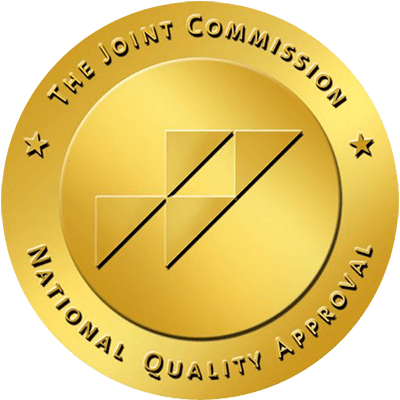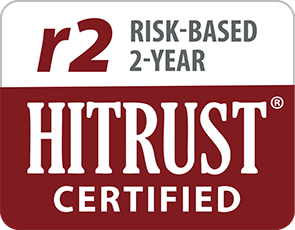Written by Shannon,
Brightside Health
7 Minute Read

Medically reviewed by:
Erin O'Callaghan, PHD
Director of Therapy
10 Minute Read

Everyone experiences feelings of fear, dread, anxiety, or panic at certain times of their lives. It’s a natural response to dangerous situations.
However, some people have these same feelings at any time for seemingly no reason at all. These intense emotional circumstances are often referred to as panic attacks.
A panic disorder is an anxiety disorder marked by repeated panic attacks and constant worrying about future attacks.
In this article, we’ll be talking about panic attacks and panic disorder, what they both look like, when you should seek help, and some helpful tips for coping.
Symptoms of Panic Disorder
Panic attacks typically begin suddenly. While they can sometimes be triggered by an event, they often occur without any warning and for no apparent reason.
While panic attacks can differ from person to person, most last anywhere from a few minutes to as long as half an hour.
Symptoms of a panic attack include:
- Rapid, pounding heart rate
- Shortness of breath
- Trembling or shaking
- Sense of impending danger
- Chest pain
- Headache
- Rapid breathing
- Lightheadedness and dizziness
- Sweating
Panic disorder is characterized by a vicious cycle of experiencing these panic attacks followed by intense worry and anxiety about having another panic attack, which can in turn trigger a panic attack. Because of this, panic disorder may involve avoiding certain situations where a panic attack took place as that person may fear it will happen again.
When your body experiences a panic attack, your body is experiencing physical symptoms similar to as if your body was in a “flight or fight” stress response, even though a dangerous situation may not be present. Because of that, many people feel extremely fatigued or exhausted after their panic attack is over.
Panic Attack vs. Heart Attack
Panic attacks are scary, and many people even think they are having a life-threatening heart attack due to the severity of their panic attack. However, it’s important to understand the differences between the two conditions so you can seek proper medical care if need be.
Although the symptoms can feel the same, they are different — heart attacks are caused by heart conditions. Panic attacks generally subside and diminish in severity over time, ending within 20 minutes or so. Heart attacks often continue and tend to worsen over time.
If you ever have any doubts about whether you are experiencing a panic attack or a heart attack, it is best to seek medical attention.
What To Do During a Panic Attack
Frequent panic attacks are not good for your overall health. They can affect your ability to engage in your daily life, lead you to avoid certain situations, develop specific phobias, and even cause physical problems such as chronic high blood pressure or heart problems.
Left untreated, panic attacks can take a toll on you both mentally and physically, so it’s important to seek help if you’re experiencing frequent panic attacks. In the meantime, here are some immediate coping techniques that may be able to help.
Deep Breathing
One of the symptoms of panic attacks is rapid breathing. Not only can this increase your feelings of fear, but it can also have a direct relationship with rapid heart rate.
If you’re able to control your breathing, you’re less likely to feel frightened by the symptoms of your attack. Not to mention, controlling your breathing may be able to bring your heart rate back to a normal rhythm, which can make you feel more calm and relaxed.
Focus on taking deep breaths through your mouth, holding the air for a count of four. Then, hold it for a second, and release for another count of four. Continue doing this until you can get your breathing and heart rate to a normal, healthy pace.
Grounding Techniques
Grounding is an effective way to calm yourself down during a panic attack. Since panic attacks can often cause a sense of detachment from reality, grounding methods try to focus your attention on tangible, physical objects to distract you from the panic attack at hand. The goal is to make you feel like you have more control over the situation.
A popular method is the 5-4-3-2-1 method. When you begin experiencing a panic attack, try to identify:
- 5 things you can see
- 4 things you can feel
- 3 things you can hear
- 2 things you can smell
- 1 thing you can taste
Taste can be difficult, so just try imagining your favorite food instead. This method helps you identify elements in the world around you, forcing you to focus on all of these things rather than your burst of panic. This technique can also help you gain control of your breathing while also slowing down your heart rate.
Remember That It Will Pass
As scary as panic attacks can be, it can be helpful to remind yourself that the feelings will subside. It is not a permanent sensation, and it won’t cause you any physical harm when it’s all over.
The symptoms of a panic attack can peak within minutes of onset. However, the symptoms will start to gradually subside after that.
It’s also helpful to acknowledge the fact that you’re having a panic attack. By doing this, you are reminding yourself that there is no real danger present.
How To Prevent Panic Attacks
While there is no way to prevent a panic attack before it occurs, there are ways that you can try to manage your panic attacks and panic disorder to decrease their frequency or severity.
Psychotherapy
A type of therapy that is especially useful for treating panic disorder is cognitive behavioral therapy, or CBT. This scientifically-proven treatment teaches you new ways to cope with the symptoms of a panic attack.
CBT teaches you skills like relaxation, deep-breathing, and mindfulness that help you with the physical symptoms of panic. CBT also teaches you different ways to change the way you think when you’re anxious or in the midst of a panic attack.
For example, you would learn skills like cognitive restructuring, reality testing, and ways to decrease catastrophizing. CBT will likely be able to diminish the severity of your panic attacks when they arise.
Medication
Many people who have panic attacks seek medication that offers immediate symptom relief, such as Xanax. However, antidepressants are a safer, more effective form of long-term treatment.
Antidepressant medications are commonly prescribed to help people with panic disorder because they can decrease the frequency and severity of panic attacks.
Two types of antidepressants have shown to be especially effective: selective serotonin reuptake inhibitors (SSRIs) and tricyclic antidepressants (TCAs). Studies found that 61% of patients were panic-free after 6 to 12 weeks of treatment with these types of medications.
In Summary
Panic disorder is an anxiety disorder that is characterized by recurrent panic attacks combined with an intense fear and worry of future panic attacks. This intense fear can affect their day to day function, such as causing them to avoid certain scenarios that may induce a panic attack.
Panic attacks often include a combination of both physical and mental symptoms, such as increased heart rate, muscle tension, feelings of impending doom, feelings of being trapped, lightheadedness, and fast breathing. They are extremely uncomfortable and often resemble heart attacks, making them stressful when they arise.
There are ways to cope with panic attacks when they occur, including deep breathing exercises and grounding techniques to give yourself a sense of control over the current situation. Additionally, it’s helpful to acknowledge your panic attack to remind yourself that there is no real danger present.
While there’s no way to prevent panic attacks from occurring, you can manage your panic disorder with therapy and medication.
Brightside can help with both of these things from the comfort of your own home — you can speak with licensed therapists and psychiatric providers who can provide consults and even send your medication right to your front door in qualified states.
Fill out your free assessment to see the difference that Brightside can make for your panic attacks.
Sources:
Panic attacks and panic disorder – Symptoms and causes | Mayo Clinic
Panic disorder | National Health Society
ADAA: Panic Attack Symptoms | Anxiety and Depression Association of America



















